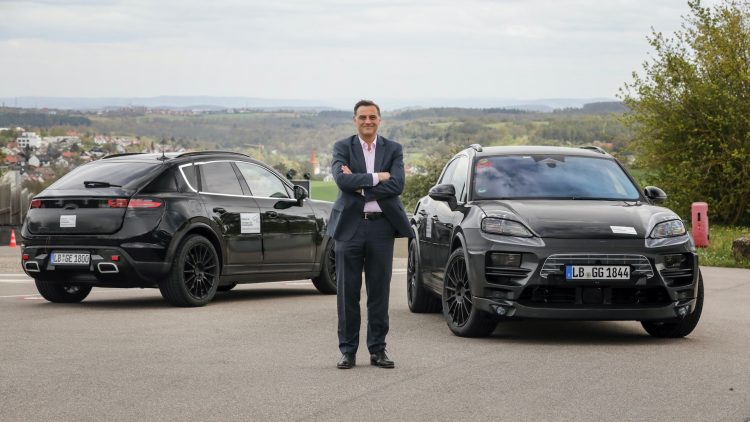Some specs and details for the next-gen, fully electric Porsche Macan for 2024 have been announced, with power output set to top out at around 450kW (600hp).
A special presentation was held overseas previewing the new model in prototype form, with Porsche announcing some of the key specs. Firstly, the new model will be all-electric, however, the petrol model is set to overlap for some extent.
The electric Macan will adopt the wider group’s latest Premium Platform Electric (PPE) architecture, capable of supporting both single (rear) and dual motor (AWD) setups. It’s understood the electric motors will be based on those used on the Taycan, except further refined for increased power density and efficiency.
Thanks to the revisions, the motors are set to offer up to 450kW and over 1000Nm. This will make the new model the most powerful Macan ever, and, likely, the quickest iteration ever as well. If the Taycan is anything to go by, around 450kW puts it in line with the Taycan GTS (440kW during overboost), which offers an official 0-100km/h time of just 3.7 seconds.
Porsche will be offering a 100kWh battery for the Macan, however, range figures are yet to be finalised. Given the Taycan GTS, with its slightly smaller 93.4kWh battery, offers a range of 485km, we could expect around 500km range for the Macan, at least on some variants.
The new model will also debut Porsche’s latest generation two-valve dampers, boasting independent adjustment through the Porsche Active Suspension Management (PASM) system. Interestingly, this will tie in with rear-axle steering that offers steering angles of up to 5 degrees. A locking differential for the rear will also assist with traction and torque vectoring.
It’s unknown at this point how many different variants of the new Macan EV will be offered, but there is a chance there will be an entry rear-wheel drive single-motor option at some point. Even in dual-motor form, the software behind the power distribution will be able to disconnect the front motor during cruising to conserve range.
Market entry for the new model will take place some time in 2024, with a global reveal expected to happen before the end of next year.

